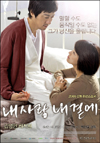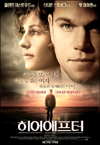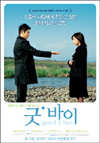Abstract
Death and dying is an ultimate process that every human being must experience. However, in these days we do not like to think or discuss about death and dying. Actually, hatred and denial is the usual feeling when we encounter death and dying. Dying is more than a biological occurrence. It is a human, social, and spiritual event, but the spiritual dimension of patients is too often neglected. Whether death is viewed as a "wall" or as a "door" can have significantly important consequences for how we live our lives. Near death experience is one of the excellent evidences to prove that there should be spiritual component being separated from the human physical body when we experience death. People have called it soul, spirit, or nonlocal consciousness. Caregivers need to recognize and acknowledge the spiritual component of patient care. Learning about death and dying helps us encounter death in ways that are meaningful for our own lives. Among the several learning tools, utilizing cinema with its audio and visual components can be one of the most powerful learning tools in death education.
Figures and Tables
Notes
References
1.
Takashi Minamoto
. Tokyo tower (film). 2005. Japan: Toho Company.
2. You HS. Institute of Text Interpretation. Spare me, death: Studying philosophy by text. 2008. Seoul: Humanist;292.
3.
Jin-pyo Park
. Closer to heaven (film). 2009. Korea: CJ Entertainment.
4.
Olivier Assayas
. Summer hours (film). 2008. France: MK2 Productions.
5. Fenwick P, Fenwick E.
MJ Jung
. The art of dying. 2008. Seoul: Boogle Books;364.
6. You HJ. Ask about life to death. 2010. Seoul: Sapiens21;327.
7.
Clint Eastwood
. Hearafter (film). 2012. US: Dreamworks SKG.
8.
Yojiro Takita
. Departures (film). 2008. Japan: Shochiku.
9. DeSpelder LA, Strickland AL. The last dance; Encountering death and dying. 2008. 8th ed. New York: McGraw Hill.
10. Lee BY. Korean shamanism and analytical psychology. 2012. Paju: Hangilsa;758.
11. Moody RA Jr.
JK Ju
. Life after life. 2007. Seoul: Haenggan Publication;191.
12. Ross EK.
JS Choi
. On life after death. 2009. Seoul: Korea Dialogue Academy;210.
13. van Lommel P, van Wees R, Meyers V, Elfferich I. Near-death experience in survivors of cardiac arrest: a prospective study in the Netherlands. Lancet. 2001. 358:2039–2045.
14. BBC. The day I died. 2004. UK: BBC.
15. KBS. Three kinds of attention on the death. 2011. Korea: KBS.
16. Long J, Perry P.
SS Han
. After the death. 2010. Seoul: Amy Factory;238.
17. Choi JS. Death, another world. 2006. Seoul: Dongasia;319.
18. Korean Society of Death Research. Guidelines of well-dying for Korean. 2011. Seoul: Korea Dialogue Academy;122.
19.
Akira Kurosawa
. Ikiru (film). 1952. Japan: Toho Company.
20. Deeken A.
JT Oh
. How to cope with the death. 2002. Seoul: Goongri Publication;250.




 PDF
PDF ePub
ePub Citation
Citation Print
Print





 XML Download
XML Download